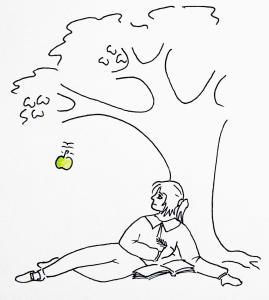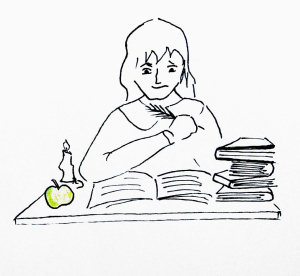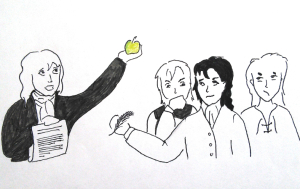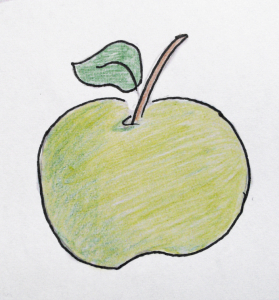How to read a scientific article?
A scientific article is a way to communicate and discuss results of a research. It will therefore be useful to understand the scientific path leading to the publication in order to better understand how to read a scientific article.
From an observation to publishing a scientific article in a glimpse
The very first step in the path is the observation of a natural phenomenon – observation in the sense of noticing and perceiving it – an instance which might be followed by the corner stone of any scientific activity – curiosity!

Curiosity will be the driving force that will lead the scientist (you) to read and try to find out any existing satisfactory explanation for the phenomenon observed. When no satisfactory explanation can be found, and based on the knowledge and experience gathered, curiosity will push the scientist to formulate a scientific hypothesis.
The Scientific Hypothesis is a suggestion of an explanation for a given natural phenomenon that can be tested and then either be supported or rejected.
Once the scientific hypothesis has been formulated the scientist will design and conduct the different tests and experiments that will allow checking whether the hypothesis can be accepted or refuted. It is important to note that sometimes a hypothesis proven to be wrong may be as interesting as proven to be right. No matter the result – the scientist might formulate more hypotheses to further investigate the phenomenon.
When the results accumulate to an interesting new insight on the phenomenon being explored, the scientist may choose to conclude and report on the results. A scientific article reporting on the original data, results, and conclusions of the researchers involved is called a “primary research article” (compare with “review article” described below).

Scientific writing in itself is a challenging task; however, conventional structures of the text help both the author and the reader follow a logical flow of information as each section of the scientific article has a unique purpose.
Scientific articles are mostly composed of the following sections:
- Abstract: summarizes the article. It will typically present the common state of mind, the observation, the hypothesis, the methodology used, key results, and major conclusions.
- Introduction: provides any relevant background information about the subject of the article. In this section previous articles and findings of interest will be cited evolving the idea around any specific observation and hypothesis tackled by the author.
- Methods: provides technical details on the different tests and experiments used to conduct the research. In this section details about specific materials and data used may also be provided.
- Results: describes the results of the relevant tests and experiments conducted through the research. Figures and tables are often used in this section to support and help visualize major findings.
- Discussion: places the research into context by interpreting the findings and providing a statement regarding the hypothesis in addition to any other question raised during the research. It is also the section in which the author may share opinions as well as questions or suggestions for further research.
- References (or Bibliography): compiles a list of published scientific articles the author used as a source of information along the text. The reference is usually denoted as a number at the end of a phrase mentioning any information issued of the publication.
- Supplemental material/data/information: provides additional text, figures, and/or data regarding the research. In some cases the reader will be referred to an external website where the supplemental data will be gathered.
Although the structure above is commonly used by many journals there are other structures you might encounter in different journals. You may find that some of the mentioned sections are presented in a different order or merged whereas other sections might be introduced.
Once the article is ready, the scientist will submit the article to a relevant journal. The journal editor(s) will then send the article to be checked by experts in the field – this process is called “peer review” and the experts checking the article are called “reviewers”. The reviewers will check and comment on the article as well as advise to clarify or add more convincing evidence to any point they find lacking. They will also eventually recommend to either accept or reject the article submitted following criteria set by the journal. If the article is accepted it will be published in the journal. If the article is rejected the author might submit the article to another journal or resubmit to the same journal once it better meets the journal’s criteria.

When a substantial amount of primary articles concerning a topic are published, publishers may request from experts in the field to write a “review article”. Review articles give an overview and summarize multiple primary research articles in a specific scientific field or subject. They will usually present the up to date consensus, disagreements, as well as different perspectives in a certain field of research.
So, how to read a scientific article?
Well now that the process starting from raising hypotheses to reporting on the results is described you might already find it easier to approach a scientific article. At first, reading a scientific article is very likely to be overwhelming but with some experience it will start to flow. Here are some tips that might help you get started:
As mentioned, scientific articles are a mean of ongoing report and discussion among peers regarding their area of expertise. It will therefore be most advisable to read as much as you can. Apart from gaining further knowledge and getting familiarized with terminologies, you will start to get acquainted with the different perspectives of scientists in the field as well as the evidences each presents to support their conclusions.
Like any of the peers, always bear in mind to be critical in your reading. Try to ask questions and find out if you agree with the author’s statements. For example, once you identify the hypotheses and questions raised in the article you might ask yourself whether they are answered to your satisfaction. Are the findings robust? Are the findings applicable in other contexts? Can you think of other explanations to the observed results? Asking questions will guide you to further explore the subject and start formulating your own hypotheses.
As you keep reading, you will soon find out there is no specific order in which you need to read a scientific article – the reading will very much depend on your experience and the kind of information you are looking for. As described, every section in an article serves a unique purpose, understanding the different purposes might help you in your reading. You may find yourself reading every single word of a certain article and then look for one specific information in another. Sounds surprising at first but it will make sense as you become accustomed.
The scientific Literacy Tool provides lots of useful resources to help you get started with a single click; however, the most important part is not for us to code but rather for you to find within yourself – your curiosity! Remember- it all starts with curiosity – your critical mind trying to pursue the path of understanding a certain phenomenon. As cheesy as this may sound – finding answers for anything that might intrigue your curiosity is a very rewarding process!

